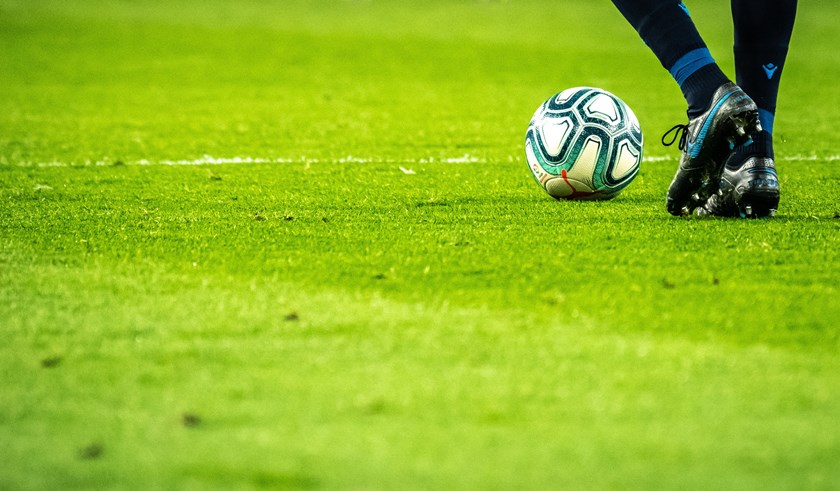Inn the Field of Play - September 2017: Does Philanthropy Mata?
News

Following Juan Mata's recent charity pledge, this month we consider the relationship between football and philanthropy.
In 2005 the Financial Times claimed that "Greed is threatening the beautiful game". Fast forward 11 years and last year the New Statesman asked "Why is there so much greed in English football?". Whenever the English national football team is knocked out of an international tournament, there are accusations that players are motivated more by money than by success. It seems that, when it comes to footballers and what motivates them, the record has not changed very much at all.
This is neither fair nor the full story. Many football clubs have long supported charitable projects. In 2014, Charity Financials found that charities set up and funded by Premier League clubs had a combined expenditure of £24.7m; not an enormous sum in the context of the wages paid to top players, of course (combined wages payments by the 20 Premier League clubs added up to £2.2bn in the 2015-2016 season), but not an insignificant contribution to charitable causes either.
Many individual football players have also given philanthropically. Some of these initiatives have been supported quietly; others with greater fanfare. Some start with good intentions that then can go wrong (often for reasons outside their control), as the Charity Commission's recent case report on its investigation into the Didier Drogba Foundation and the alleged shortcomings in the administration of Craig Bellamy's charity in Sierra Leone have showed.
The argument that all top-level footballers are greedy was given a significant setback on 4 August, however, when the Manchester United and Spain midfielder Juan Mata pledged to donate 1% of his salary to a collective fund known as Common Goal. He called for others to join him.
Common Goal is an initiative of the Berlin-based NGO Streetfootballworld. It is an international network of more than 120 charities and other community organisations in 80 countries with the purpose of tackling social issues such as education, health and social integration through football.
Days later, at a press conference before Manchester United’s UEFA Super Cup final against Real Madrid, journalists asked Mata about Common Goal. It was clear his announcement had made an impact.
A fortnight later, Mata was no longer alone. The Bayern Munich and Germany defender Mats Hummels agreed to join Mata in donating 1% of his salary to Common Goal. Since then a further 11 players have joined the initiative, of whom the two named publically are Alex Morgan and Megan Rapinoe, two of the most prominent members of the USA women's national team. At the recent Soccerex Global Convention in Manchester, Mata said they had been joined by a Manchester United team-mate of his whose name will be revealed soon. At the time of writing, further players are rumoured to be joining although it has been noted that to date no British players have yet committed.
The Common Goal initiative is interesting for a number of reasons.
The first is the profile of the four footballers named to date. These are players at the peak of their careers (aged between 28 and 32) and notably all are World Cup winners. They are role models beyond their own clubs and countries as well, given the global reach of Bayern Munich or Manchester United. But the nature of the donation (one based on a percentage of income rather than absolute sum) makes the gesture inclusive rather than exclusive. Whether a player is at the very top of the profession earning hundreds of thousands of pounds a week, or playing in the lower leagues earning a salary closer to the national average, all players are potentially able to make the same commitment.
Secondly, those who have joined the call are from the "millennial" generation that appears to have new ideas about philanthropy. A Forbes piece published in February this year argued that "rather than making random or one-off donations, [millennials] are a generation characterized by integrating the causes they care about into their daily routines." Here, the Common Goal initiative echoes the Founders Pledge, through which a group of tech entrepreneurs (many themselves from the millennial generation) have committed to donate 2% of their personal proceeds to a social cause of their choice following a business sale. Its CEO David Goldberg has said that: “Founders Pledge is working to move the needle for entrepreneurs as it relates to philanthropy and getting founders to start to think about doing good early on in their careers." Mata's gesture does something similar for professional footballers.
Thirdly, the nature of the giving is through a collective fund. There are many different ways for philanthropists (footballers or otherwise) to give, of which the main options are:
- making donations directly to support charities (which can be traditional "chequebook" philanthropy);
- establishing a foundation, sometimes bearing the founder's name, through which he or she retains a greater degree of control over how the funds are spent and takes on responsibility (with his or her trustees) for running a charity;
- using the services of a donor-advised fund, through which the philanthropist gives up a degree of control but also hands over some responsibility.
Which of these options is most appropriate for an individual will depend on their own priorities and preferences. For some donors, keeping control over how their donations are used will be critical. For others, giving in the most tax efficient way possible is more important, so as to maximise the value of the gift to charity.
What is interesting about Mata's explicit call for a "Common Goal XI" and for his gesture to be "shared" was the way this echoed not only football's own sense of the collective but also the preferences and priorities of a new generation of philanthropists. Research by the fundraising platform Give as you Live found that "millennials seem to express their individuality through practices that resemble sharing, rather than giving."
Mata himself seemed to be aware of this, stating in a blog for the Players' Tribune that his was "a small gesture that if shared can change the world". He added that "I’m asking my fellow professionals to join me in forming a Common Goal Starting XI. Together we can create a movement based on shared values that can become integral to the whole football industry – forever. I am leading this effort, but I don’t want to be alone."
The real value of Mata's not insubstantial donation is the precedent value it creates. The possibility of his generosity being shared by those across the game – and perhaps even being replicated more widely by a younger generation of givers – creates the potential for something truly transformative.
If you require further information on anything covered in this briefing please contact James Maloney or your usual contact at the firm on 020 3375 7000. Further information can also be found on the Sports Organisations page on our website.
This publication is a general summary of the law. It should not replace legal advice tailored to your specific circumstances.
© Farrer & Co LLP, September 2017







